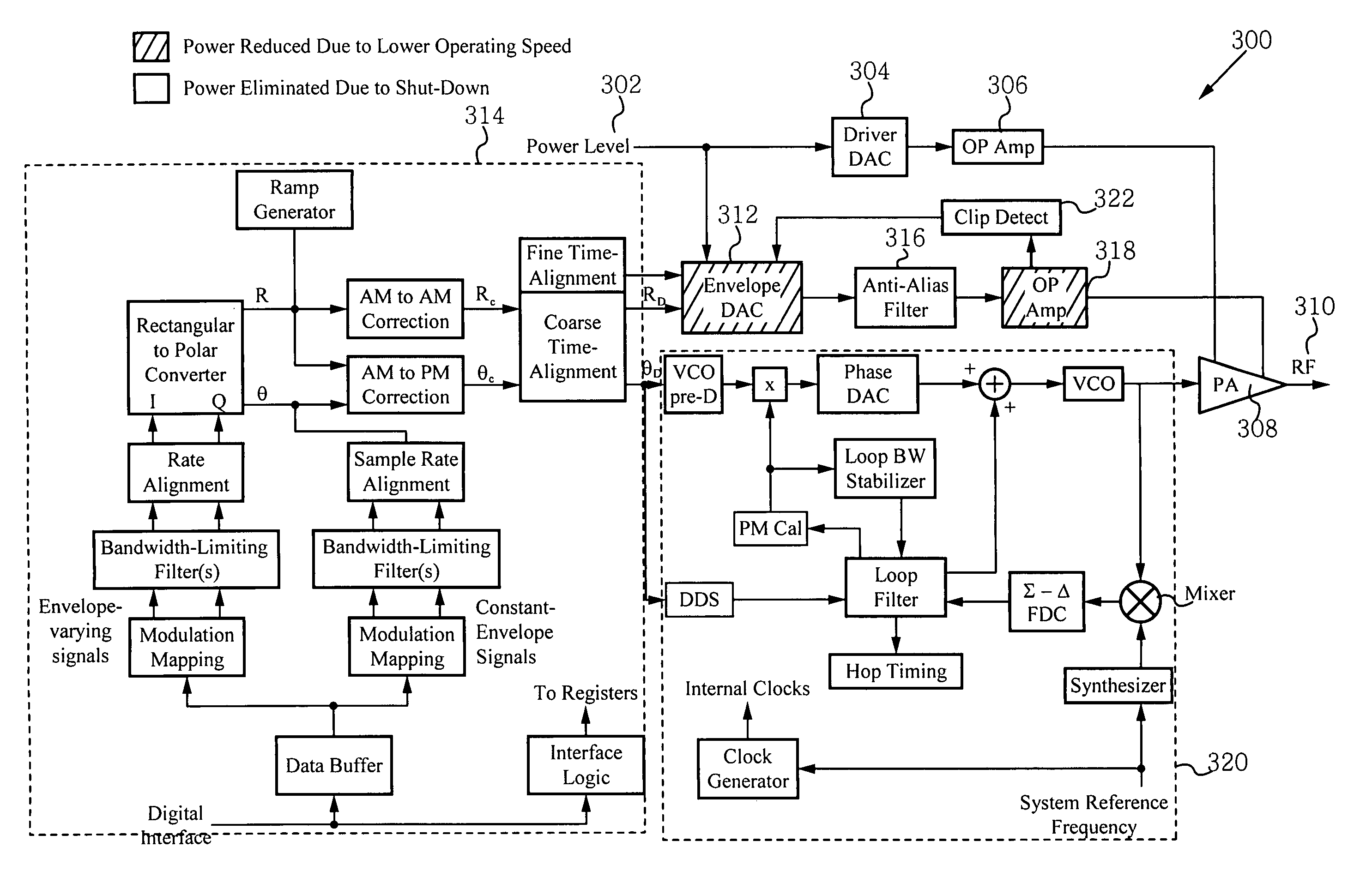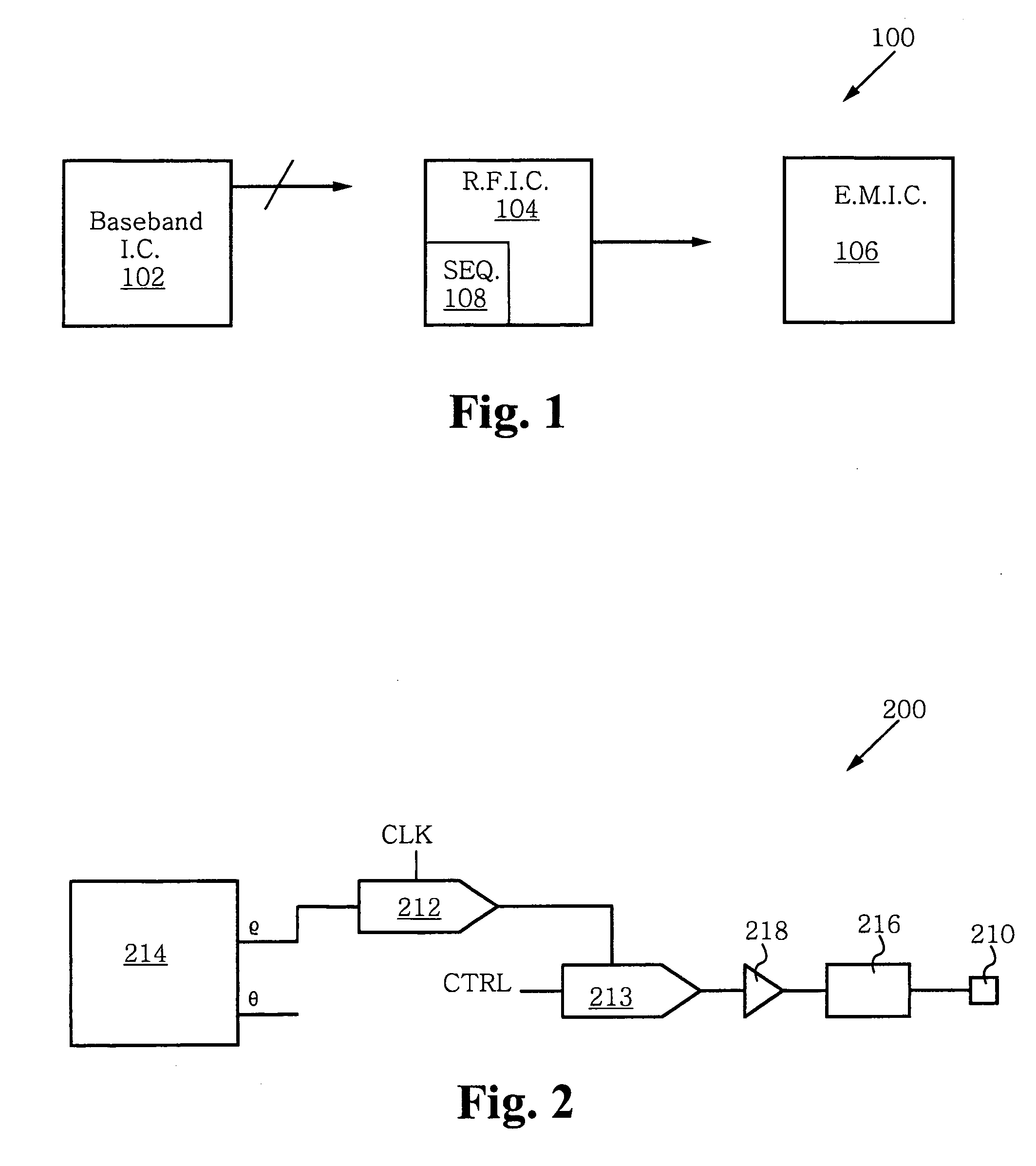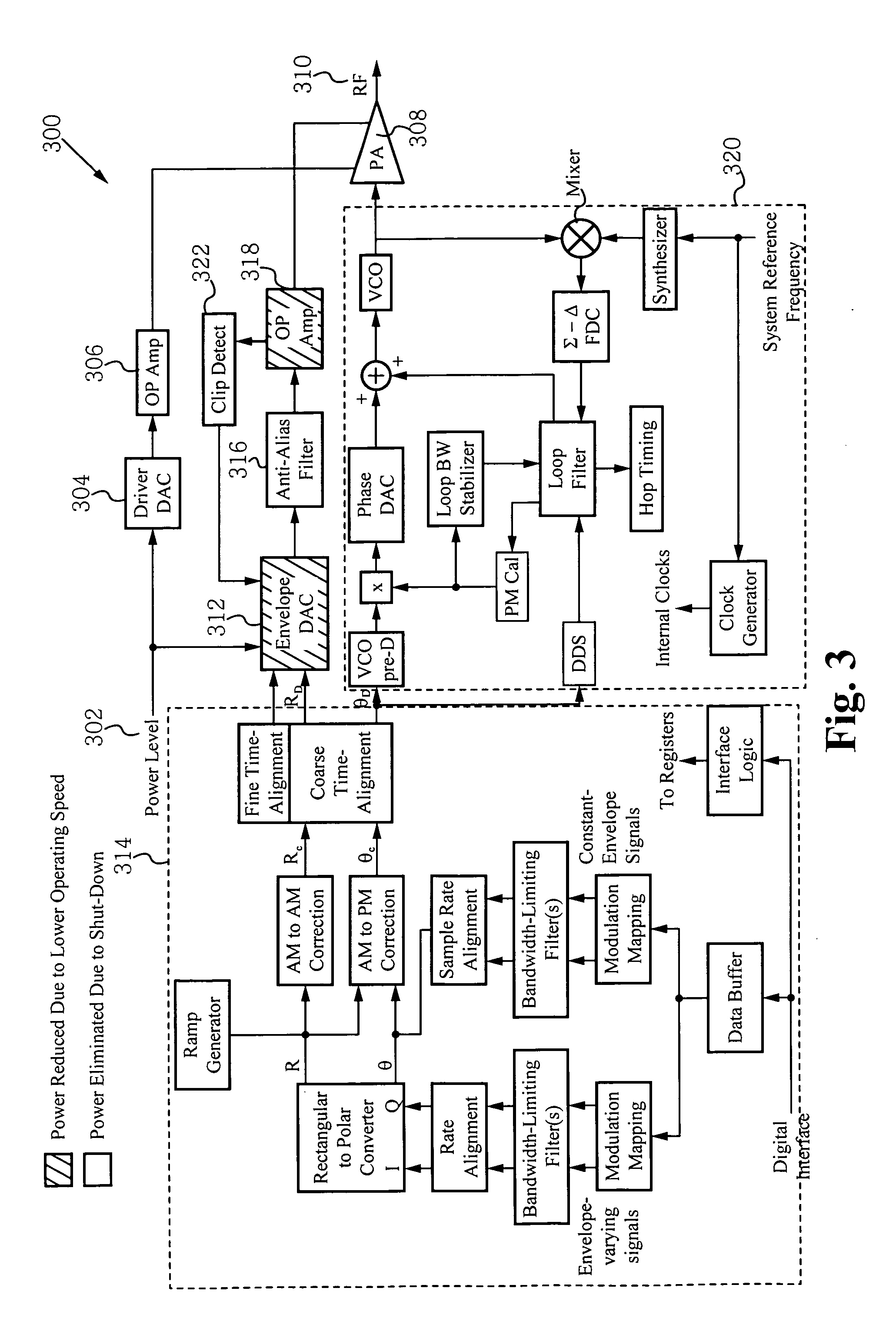Selective envelope modulation enabling reduced current consumption
a selective envelope and current consumption technology, applied in the field of envelope modulation, can solve the problems of reducing the operation rate and power consumption, and achieve the effects of reducing the current consumption, reducing the power consumption of the signal, and reducing the power consumption
- Summary
- Abstract
- Description
- Claims
- Application Information
AI Technical Summary
Benefits of technology
Problems solved by technology
Method used
Image
Examples
Embodiment Construction
[0019]In the following description, numerous details and alternatives are set forth for purpose of explanation. However, one of ordinary skill in the art will realize that the invention can be practiced without the use of these specific details. In other instances, well-known structures and devices are shown in block diagram form in order not to obscure the description of the invention with unnecessary detail.
[0020]In modern high capacity wireless communication systems, many signals chosen for transmission use a combination-of amplitude modulation (AM) and phase modulation (PM) to minimize the signals' occupied bandwidth. These signals generally use linear circuitry in their implementation, and implement the combined modulation using quadrature (I&Q) techniques.
[0021]Some embodiments of the invention employ a polar transmitter that includes an amplitude modulation path and a phase modulation path. When this type of polar transmitter is used, the amplitude modulation path can selecti...
PUM
 Login to View More
Login to View More Abstract
Description
Claims
Application Information
 Login to View More
Login to View More - R&D
- Intellectual Property
- Life Sciences
- Materials
- Tech Scout
- Unparalleled Data Quality
- Higher Quality Content
- 60% Fewer Hallucinations
Browse by: Latest US Patents, China's latest patents, Technical Efficacy Thesaurus, Application Domain, Technology Topic, Popular Technical Reports.
© 2025 PatSnap. All rights reserved.Legal|Privacy policy|Modern Slavery Act Transparency Statement|Sitemap|About US| Contact US: help@patsnap.com



